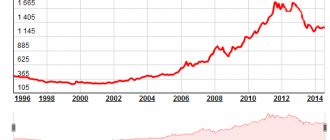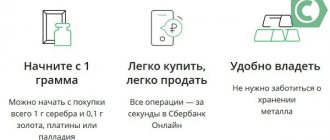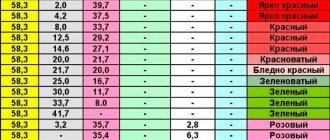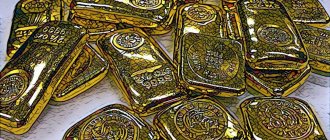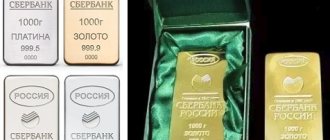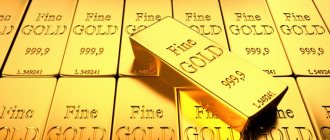“The WGC study found that 79% of retail investors are considering investing in gold in the future, and 57% of Russians are open to the possibility despite never investing in gold before,” the report says.
At the same time, young investors aged 25-34 showed the greatest interest in investing in gold. Thus, 17% of them reported that they had invested in the last 12 months, and 27% said that they would definitely invest in gold in the future.
The vast majority of investors in Russia—75% of respondents—consider gold to be a safe, reliable and valuable asset that will never lose its value. Two-thirds of Russians perceive this precious metal as a hedge against inflation and currency fluctuations, and more than half (52%) trust gold even more than the currencies of other countries.
Investors in Russia save or invest about 15% of their income, the study says. The most popular investment products in Russia were savings accounts, foreign currency, real estate, life insurance and cryptocurrencies. Gold took sixth place in popularity among types of investments.
It is worth noting the different attitudes of men and women to investing in general. Men prefer a short-term approach and are more aggressive in making investment decisions; many consider this process as a hobby. Women, on the other hand, are taking a less risky approach and seeking stability—78% of women surveyed had invested in savings accounts in the last 12 months.
The study, which took place in the second and third quarters of 2019 and was conducted on a sample of 12 thousand respondents, is devoted to an overview of the markets and the specifics of people’s attitudes towards gold in China, India, North America, Germany and Russia. In Russia, more than 2 thousand investors were interviewed who live in cities throughout the country.
What's stopping you from buying gold?
Despite the high interest in investing in gold, only 16% of Russians surveyed said they currently own it. The main deterrent to retail investment in gold in Russia is the high VAT on gold bars.
“The VAT rate on gold investment bars of 20%, which is the highest in the world, is holding back the growth of the investment market. The expected abolition of VAT (on transactions where banks sell precious metals in bullion to individuals - TASS note) could help revive the market and stimulate investment, since, as the study shows, investors in Russia are open to gold,” notes the director of public policy and interaction with the central banks of the World Gold Council Tatiana Fitz, whose words are quoted in the report.
In addition, investors note a lack of necessary information about investing in gold (64%), and almost a quarter of all respondents (23%) are afraid of buying counterfeit gold.
What is the World Gold Council
18.02.2021
The leaders of the world's mining and production of the yellow metal are united in a non-profit association called the World Gold Council (abbreviation: WGC). This structure includes 25 mining and other companies seeking to develop and control the precious metals markets.
The World Gold Council was created to develop the market in the gold mining industry. The organization itself sees its goal as stimulating and maintaining demand for gold, providing leadership in the industry and being the global authority on the gold market.
In other words, the World Gold Council was formed to lobby the interests of its members, research the market situation, conduct active marketing policies in support of its constituent companies and manipulate supply and demand in the gold market. The organization's head office is located in London. From here, approximately 3/4 of the world's gold turnover is controlled.
The World Gold Council is committed to boosting consumption. Its task is to protect, maintain and increase the existing demand for the precious metal for the further development of the industry. To this end, the structure allocates funds for monitoring markets, research programs in the field of promoting gold-containing products and searching for new areas of application for the precious metal. This direction of the World Gold Council's activities has already made it possible to obtain metal with a purity above 99%.
Historians believe that gold was first smelted and used as a precious metal back in the 37th century BC in Ancient Egypt. Reaching this quality to the present day, today it is used for the production of jewelry, medical equipment, electronics, and is also used as an effective investment tool.
According to the World Gold Council, the greatest volume of production of the yellow metal occurred in the period after World War II and modern times. Today, the development of precious metal deposits is carried out everywhere on the planet, with the exception of Antarctica. With each new decade, the number of gold-mining countries is growing. Therefore, production no longer has such a narrow local concentration as in the past and is evenly distributed throughout the world. Gold mining is active in Peru, China, South Africa, Australia, Canada, Russia and the United States of America.
The attractiveness of gold is due to both its commercial properties and investment use. The minimal demand for the yellow metal is supported by its use in dentistry, the electronics industry and jewelry. This is a non-financial area. The rest of the demand is provided by large and small investors who see gold as a reliable asset that can protect savings and capital from inflation and economic crises.
Gold cannot be counterfeited. Its reserves on earth and in its depths are limited. And the depreciation of the precious metal can only be caused by a sharp increase in mined volumes, which was practically not observed.
The World Gold Council has initiated the emergence of structures such as gold exchange-traded funds (ETFs). The essence of their activity is to issue securities for the stock market, the profitability of which depends on the quotes of index funds, certain categories of assets, bonds and commodity indices. The securities of gold exchange-traded funds are traded like traditional stocks. The attractiveness of this alternative investment method for individual investors is due to the fact that ETFs are superior to mutual fund securities in terms of daily liquidity and are not burdened with high commissions. All ETF price volatility is contained within the daily trading session. And asset management is carried out by professional traders, which increases investment efficiency.
to the list
How will the pandemic change demand for gold?
The global coronavirus pandemic has already had a significant impact on the price of gold - the value of the metal has risen sharply and reached record highs in many currencies. At the same time, the demand for gold has changed in different ways around the world. Thus, it increased significantly in Western markets, decreased in Asia, and remained virtually unchanged in Russia, Tatyana Fitz reported to TASS.
“It is difficult to predict what the data for the third quarter will show. However, judging by the results of a study of Russians’ attitudes towards gold, interest in investing in gold may have increased during the pandemic. People turn to gold during crises, and this also applies to the current economic conditions. It is not yet clear how serious the second wave of the pandemic will be, so investors will likely seek to avoid risks,” notes the WGC Director of Public Policy.
The pandemic could affect people's long-term attitudes towards gold, the expert believes. Russia is now looking to improve financial literacy and develop a retail investment market with a focus on long-term savings and pensions.
“Amid the pandemic, consumers may want to learn more about how to best manage their long-term savings. Research shows that gold is an important part of savers' and investors' long-term portfolios,” Fitz concluded.
World Gold Council predicts a strong year for gold
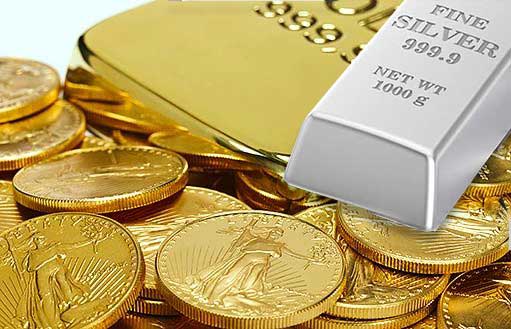
According to the World Gold Council (WGC), two main factors will drive gold prices in 2021. Demand for physical gold will remain elevated and demand for silver will increase due to technological advancements.
With the exception of a massive market sell-off in March, gold began to rise rapidly and unchecked last year. Having surpassed the previous high set in 2011 at $1,911 and rising to a fresh record peak of $2,067 in August, gold continued to trade in a new price range with exceptionally strong support above the $1,800 level.
Although the rally was sparked by panic, portfolio revaluation and well-founded concerns about inflation soon became the drivers of growth. These two factors are highlighted as key in the World Gold Council's (WGC) 2021 forecast.
As WGC notes, investors will be risk-averse despite the fact that stock valuations are quite questionable. Increased stock market activity will be driven by the desire for profit in a rapidly changing environment and expectations of a global economic recovery. Since the former is largely a result of sovereign bonds losing much of their yield after adjusting for inflation and their status as a hedge, investors will instead turn to gold as a safer, more inflation-resistant and safe haven.
This theory is confirmed by the stability of the gold price above $1,800 dollars without strong indicators of inflation. We can only imagine how high the precious metal will rise as the effects of the unprecedented expansion of the money supply begin to materialize. Government decisions will continue to support gold for several reasons:
Additionally, the WGC report found that the price of gold has historically risen 15% on average in years when inflation exceeded 3%—a scenario that neither the Federal Reserve nor the European Central Bank is opposed to.
Demand for gold reached record levels last year, but as noted in a report by the World Gold Council, demand for physical gold has not kept pace with the derivatives market. While everyone knows that the COMEX has struggled to cover gold derivatives (also known as “paper gold”), the average investor's demand for physical gold has contributed to the supply shortage.
Risk appetite among investors has increased over the past few weeks, suggesting that sentiment regarding the global economic recovery is clearly optimistic and, although it may be slightly exaggerated, there are already signs of increased consumer demand from major gold buyers.
According to the WGC, China, which was among the countries most affected by the crisis, managed to cope better with the situation than many Western countries. According to the World Gold Council, China's economic strength is inextricably linked to consumer demand for gold at home, and an overall increase in consumer spending will lead to increased jewelry purchases without much delay.
The WGC forecast also noted that a similar situation is developing in India, where statistics from the November Dhanteras festival almost confirm the gradual return of consumers to the gold market. With China and India consistently among the world's largest gold consumers, their economic recovery will play a significant role in maintaining the exceptional gold demand seen over the past 12 months.
Central banks will end the year as net buyers, even though they turned to selling, the organization said. Official sector sales of the precious metal are expected to remain secondary to the ongoing push to diversify central bank reserves. A potential recovery in production will be another cause for optimism among gold investors as the global market favors an extended bull market.
The global trend towards clean energy and the accompanying need for massive amounts of silver was the first reason for the expectation that the price of silver would rise to $40 dollars, but this is far from the only factor. Along with overall investment demand and a gold-to-silver ratio that remains noticeably imbalanced, a recent Silver Institute study found that the precious metal's use as a component in electric vehicle manufacturing is another important growth driver.
While it also has environmental ties, silver has typically been used in the production of photovoltaic cells, which convert the sun's energy into electricity. However, the Silver Institute believes that the auto sector is seeing some important innovations that will drive demand for silver for many reasons.
To incorporate technological advancements into modern automobile manufacturing, manufacturers are increasingly relying on silver. This led to the emergence of another powerful demand center. By 2025, the automotive industry is projected to consume nearly 90 million ounces of silver annually. Notably, by then this will rival silver consumption from the photovoltaic industry, which is projected to be 98 million ounces this year. This sector currently provides the largest demand for industrial silver.
Automotive demand rivaling that of the photovoltaic industry would be extremely bullish for silver's long-term prospects, especially since the metal is more difficult to mine than gold. The Silver Institute also noted that silver is already used in existing engines, ranging from 15-28 grams in passenger cars to 25-50 grams for heavier-duty engines. In addition to the use of silver for charging stations, autonomous driving will significantly increase the technological complexity of vehicles and, as a result, the need for silver for their components.
Source: zolotoy-zapas.ru
(Visited 16 times, 1 visits today)


